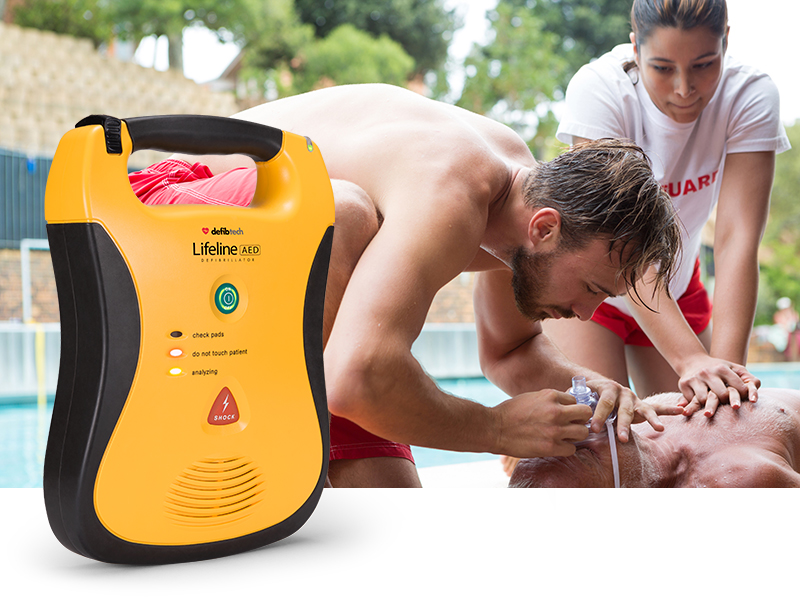What Should You Do If You Need to Use an AED on Someone Who Has Been Submerged in Water
May 5, 2021
 Automated External Defibrillators (AEDs)
Automated External Defibrillators (AEDs) are easy to use but there are a few factors to consider when using one. One of those factors is water.
If a person is fully submerged in a pool, lake, ocean, or another body of water, they need to be removed from the water. You cannot place the
AED pads and use the AED if a person is completely under water.
AED & Pad Placement
If a person has just come out of the water when they collapse or is in a small puddle or snow, you CAN use the
Lifeline VIEW AED. The person does NOT need to be completely dry. When using an AED on someone who does have water on them, it is important that you dry off the area where the pads are going to be placed. It is crucial for the pads to stick firmly to the body so the AED can start analyzing immediately and determine if a shock is needed or not.
Remember, your AED should have a
Rescue Kit with it. The Rescue Kit should include a CPR Mask, a razor, scissors, wipes, and gloves. You can use the wipes to dry off the area where the pads are going to be placed.
As always, the quicker the AED is used, the higher the chances of survival. When dealing with water, quickly dry off the area where the pads will be placed so you can deliver a shock as soon as possible!
To learn more about Defibtech and to join us on our quest to
save lives from sudden cardiac arrest, visit
www.Defibtech.com.
